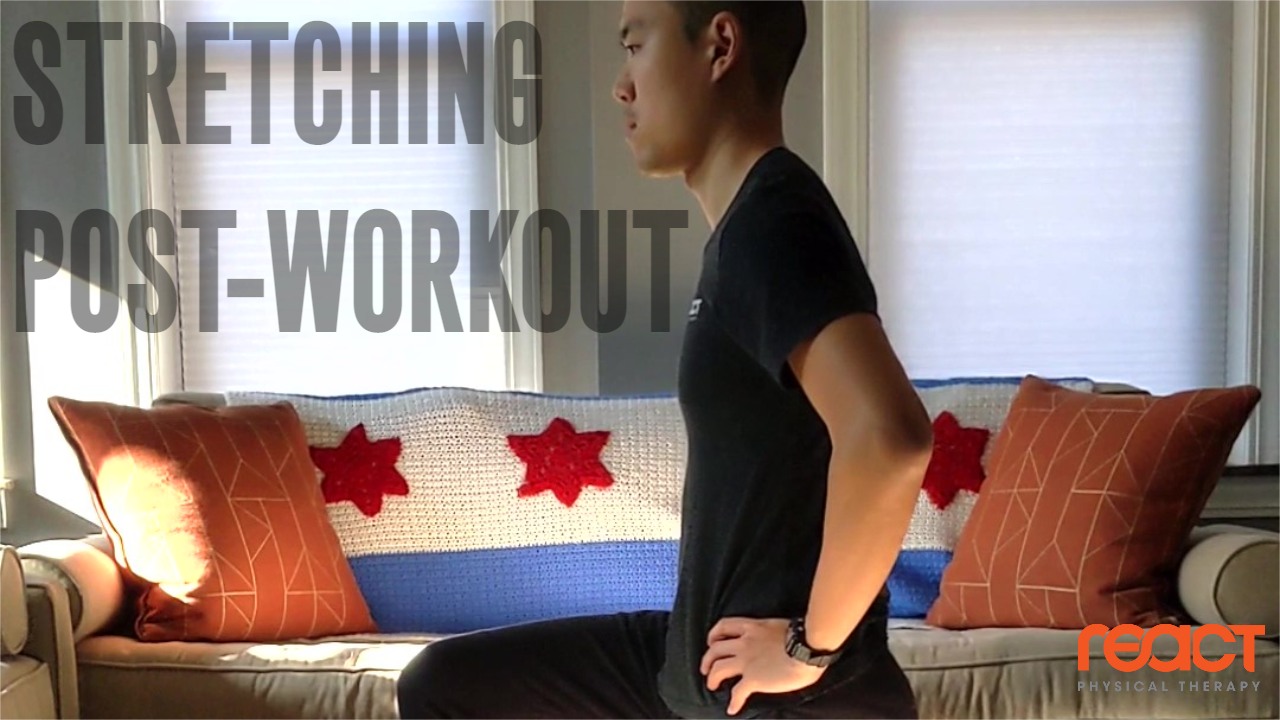Stretching Post-Workout

You’ve just finished a strenuous workout—you might have run a few miles, lifted a few weights, swam a lap or two—but did you stretch? Stretching often falls by the wayside of people’s workout routines. It might hurt, it might take too much time, or maybe you honestly forgot, but stretching is important in the overall picture of your physical health.
Why should I stretch?
Stretching keeps your muscles flexible and can help you maintain joint range of motion. Without stretching, you can become tight, create a muscle imbalance, and prevent your joints from moving properly over time.
How should I stretch?
Stretching should NOT hurt. Stretching should be gentle and relatively comfortable. You should support yourself as much as you can when stretching, so as not to put extra pressure on other areas of your body. For example, if you are bending forward to stretch your hamstrings, you can place your hands on a wall or table to put less pressure on your back.
How long do I need to hold it?
There has been limited research, but the current studies illustrate differences in needs based on your age group:
- Kids: Stretch for one minute, regardless of how you break it up (1 stretch of 60 seconds was the same as 2 stretches of 30 seconds, etc.).
- Age 21-39: Stretch for 30 seconds. Research supports a total of 2 minutes per muscle each day.
- Seniors: Stretch for 60 seconds per muscle. The study had the participants stretch each muscle 4 times.
Examples:
◾ Hip flexor stretch: place a pillow under the knee for comfort. You should feel a stretch in the front of your back leg.
◾ Hamstring stretch: support yourself on a wall or a table/chair: You should feel a stretch in the back of your legs.
◾ Low back stretch (child’s pose): you can use a stability ball or rolling chair if you want.